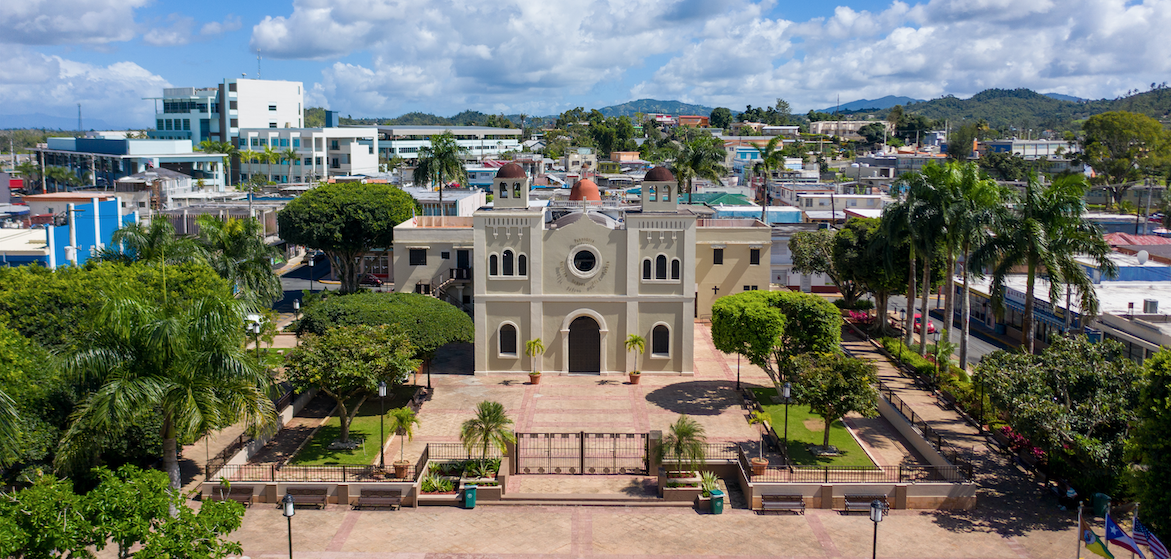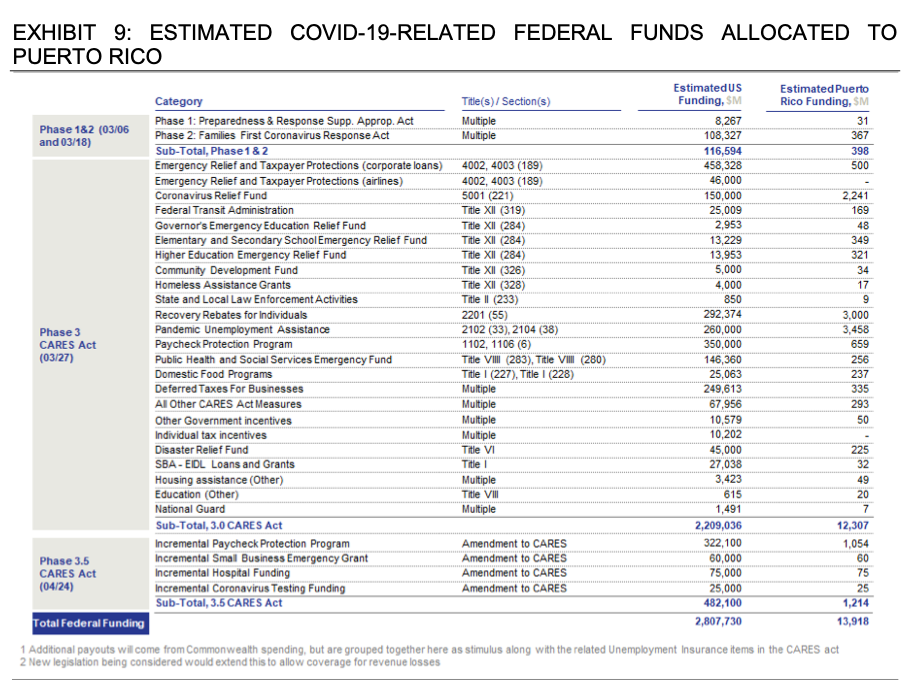
Published on July 9, 2020 / Leer en español
Dear Readers:
As we move deeper into the summer, we pause to take a look at how the economic austerity discourse has come to dominate the debate about municipal reform in Puerto Rico. Our colleague, Raúl Santiago, peels back the layers of the official narrative and explains why it is necessary to change it.
With the COVID-19 pandemic still raging in the mainland, the team at CNE is wondering about how Puerto Rico is spending the $13.9 billion it has been allocated in federal funds to address the effects of the pandemic.
The delays in the reconstruction after the 2017 hurricanes and the earthquakes this year have rendered the traditional lack of transparency and accountability that characterizes public spending in Puerto Rico completely unacceptable. People have a right to know why they have to sleep in their cars overnight to receive Pandemic Unemployment Assistance, why some groups are favored over others in the expenditure of the Coronavirus Relief Fund, and why it took so long to disburse the Recovery Rebates to Individuals.
—Sergio M. Marxuach, Editor-in-Chief
Insights + Analysis from CNE

Overcoming Austerity Measures in Municipal Governments
By Raúl Santiago-Bartolomei, Ph.D.
Four years after the federal law PROMESA was approved, and after nearly fifteen consecutive years of fiscal austerity measures, our public management vocabulary has adopted concepts and terms generally associated with the business sector. Since then, efforts have been made to “optimize” resources, improve “efficiency” when providing services, and achieve “self-sufficiency” in public agencies. In some cases, applying these ideas can lead to improvements in the administration and quality of public services. However, the unreserved adoption of these terms demonstrates that austerity has become the guiding discourse of government management practices. One of the cases that best reflects this dynamic is the recent proposal of the Fiscal Control Board (“the Fiscal Board”) on how to address the fiscal situation of the municipalities.
Several municipalities have certainly had a wide range of fiscal problems for decades. Many have been experiencing operational deficits for years. Corruption cases involving numerous mayors abound. This is not to mention the numerous examples of exorbitant contracts for services of dubious public performance, construction projects that were never completed, the lack of transparency in the management of municipal budgets, the unjustified salaries of mayors and their staff, and funds wasted on completely unnecessary expenses and projects. This situation has undermined the confidence of citizens towards their municipal governments. However, it has also paved the way to justify the implementation of austerity measures that do little or nothing to address these problems.
COVID-19-Related Federal Funds for Puerto Rico

Source: 2020 Certified Fiscal Plan for Puerto Rico, May 27, 2020, p. 34.
According to the most recent certified Fiscal Plan for Puerto Rico, Congress has allocated $13.9 billion to address the effects of the COVID-19 pandemic. As shown in the chart above, the principal allocations are: (a) $3.45 billion for Pandemic Unemployment Assistance; (b) $3 billion for Recovery Rebates for Individuals; and (c) $2.24 billion from the Coronavirus Relief Fund.
Unfortunately, the COVID-19-related federal funding has been managed with the traditional opacity that characterizes government operations in Puerto Rico. It is of the utmost importance that the current administration in Puerto Rico issues and discloses a public accounting of the uses on which these funds have been spent. Given that the primary election season is upon us, this disclosure is imperative in the case of the $2.24 billion from the Coronavirus Relief Fund, which Puerto Rico has been granted significant leeway to spend.
On Our Radar...
![]() How to Think About Existential Risk – The Economist reports about existential risk and the future of humanity. According to their analysis, “Getting such risks taken seriously will never be easy. It is to some extent contrary to human nature. Humans assume that the future will be like the past; they prepare for things they have experience[d]…[for example] countries hit hard by SARS have, by and large, done better against covid-19 than those which never had to get to grips with the previous pandemic. When it comes to the truly novel, no one will have that core of experience to build on…”
How to Think About Existential Risk – The Economist reports about existential risk and the future of humanity. According to their analysis, “Getting such risks taken seriously will never be easy. It is to some extent contrary to human nature. Humans assume that the future will be like the past; they prepare for things they have experience[d]…[for example] countries hit hard by SARS have, by and large, done better against covid-19 than those which never had to get to grips with the previous pandemic. When it comes to the truly novel, no one will have that core of experience to build on…”
![]() Decline is Invisible from the Inside – Charles King, professor of international affairs at Georgetown University, writes in Foreign Affairs about how great powers fall apart. King analyzes the writings of former Soviet dissident Andrei Amalrik, who “was concerned with how a great power handles multiple internal crises—the faltering of the institutions of domestic order, the craftiness of unmoored and venal politicians, the first tremors of systemic illegitimacy. He wanted to understand the dark logic of social dissolution and how discrete political choices sum up to apocalyptic outcomes. His prophecy was time delimited, ending in 1984, but it isn’t hard to hear its ghostly echo today. To know how great powers end, one could do worse than study the last one that actually did.”
Decline is Invisible from the Inside – Charles King, professor of international affairs at Georgetown University, writes in Foreign Affairs about how great powers fall apart. King analyzes the writings of former Soviet dissident Andrei Amalrik, who “was concerned with how a great power handles multiple internal crises—the faltering of the institutions of domestic order, the craftiness of unmoored and venal politicians, the first tremors of systemic illegitimacy. He wanted to understand the dark logic of social dissolution and how discrete political choices sum up to apocalyptic outcomes. His prophecy was time delimited, ending in 1984, but it isn’t hard to hear its ghostly echo today. To know how great powers end, one could do worse than study the last one that actually did.”
![]() Caste and Race in the United States – Isabel Wilkerson, the author of the prize-winning The Warmth of Other Suns, a monumental history of the Great Migration of African Americans from the South to the North and West of the United States, writes in the New York Times about the interplay of race and caste in U.S. society. According to Wilkerson, “Caste and race are neither synonymous nor mutually exclusive. They can and do coexist in the same culture and serve to reinforce each other. Race, in the United States, is the visible agent of the unseen force of caste. Caste is the bones, race the skin. Race is what we can see, the physical traits that have been given arbitrary meaning and become shorthand for who a person is. Caste is the powerful infrastructure that holds each group in its place. Its very invisibility is what gives it power and longevity.”
Caste and Race in the United States – Isabel Wilkerson, the author of the prize-winning The Warmth of Other Suns, a monumental history of the Great Migration of African Americans from the South to the North and West of the United States, writes in the New York Times about the interplay of race and caste in U.S. society. According to Wilkerson, “Caste and race are neither synonymous nor mutually exclusive. They can and do coexist in the same culture and serve to reinforce each other. Race, in the United States, is the visible agent of the unseen force of caste. Caste is the bones, race the skin. Race is what we can see, the physical traits that have been given arbitrary meaning and become shorthand for who a person is. Caste is the powerful infrastructure that holds each group in its place. Its very invisibility is what gives it power and longevity.”
